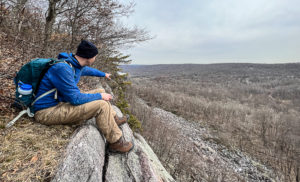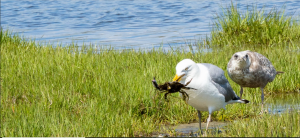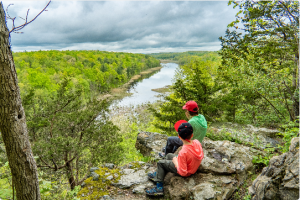More than a First Aid Kit
My First Aid Kit is more than just supplies to fix wounds or other injuries. I carry what I think of broadly as an “Emergency” or “Fix It” kit – it’s a First Aid Kit, but also includes items to prevent or fix other problems I might have on the trail, such as broken gear or a lost piece of gear that’s critical to staying safe.
General philosophy & weight considerations
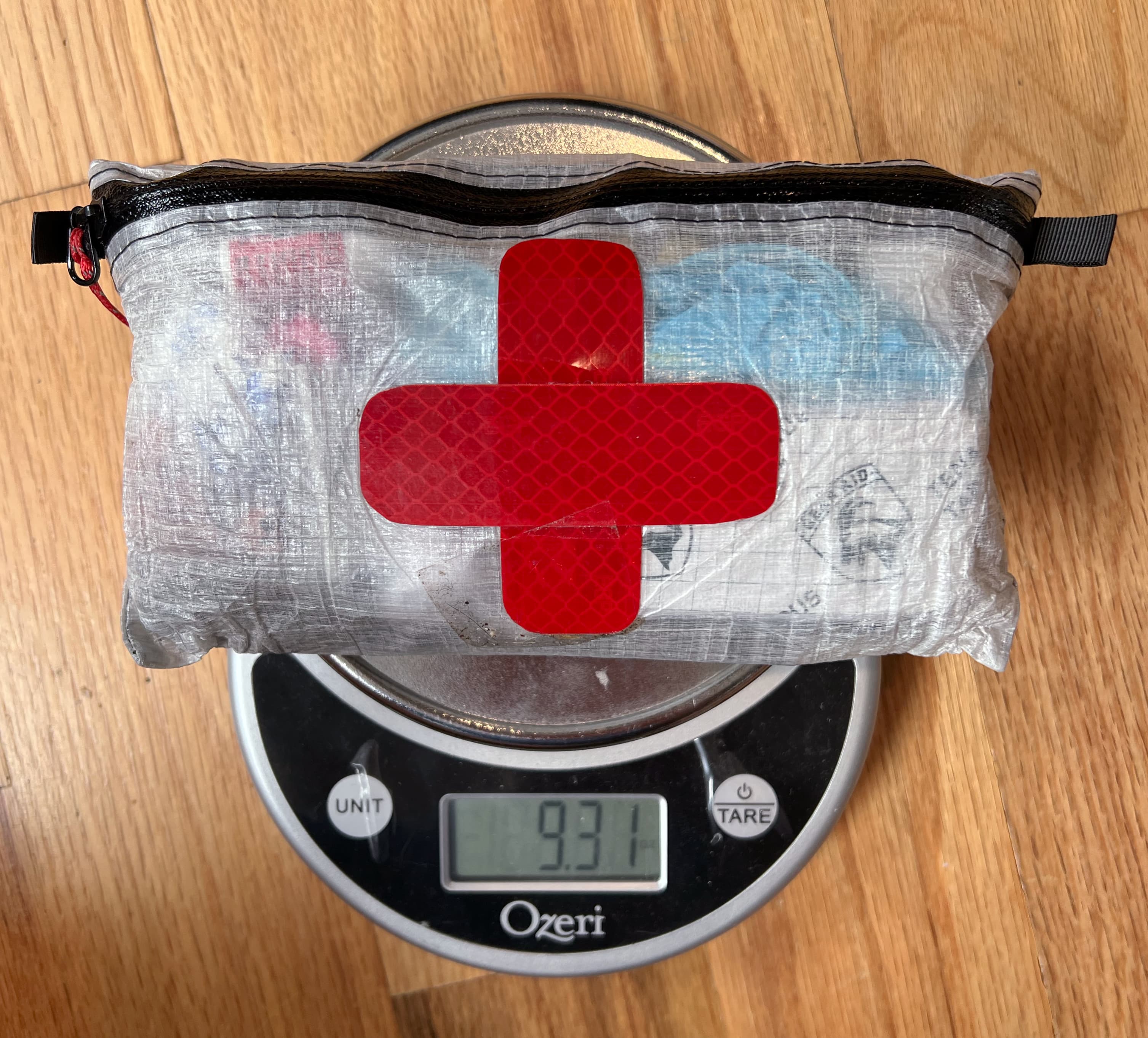
I try to be judicious and thoughtful about what I include in order to prepare for both “high likelihood” and “high risk” situations, while trying to avoid being “stupid light.” This is not the place to count grams, but I’m sure my kit could be lighter. In total, it weighs about 9.3 ounces.
My kit has evolved over time to include items for problems I’ve encountered in the past – including an on-trail sinus infection that nearly ruined a trip and hyponatremia (low electrolyte level) from drinking way too much water. I’m prone to sinus and upper respiratory infections and have modified my kit accordingly. You should customize your kit to meet your specific needs and conditions.
I have been certified twice in Wilderness First Aid through NOLS, and my first aid supplies are largely influenced by their training and recommendations. Just as important as what goes inside your kit is your knowledge. I highly encourage people to learn first aid and to know how to use the supplies you carry.
The gear
The photo below shows all the items I would typically carry in my emergency kit on a multi-day backpacking trip. For a day hike, I cut this down by removing a lot of the gear-related items and most of the drugs, but I keep most of the first aid and wound management supplies.
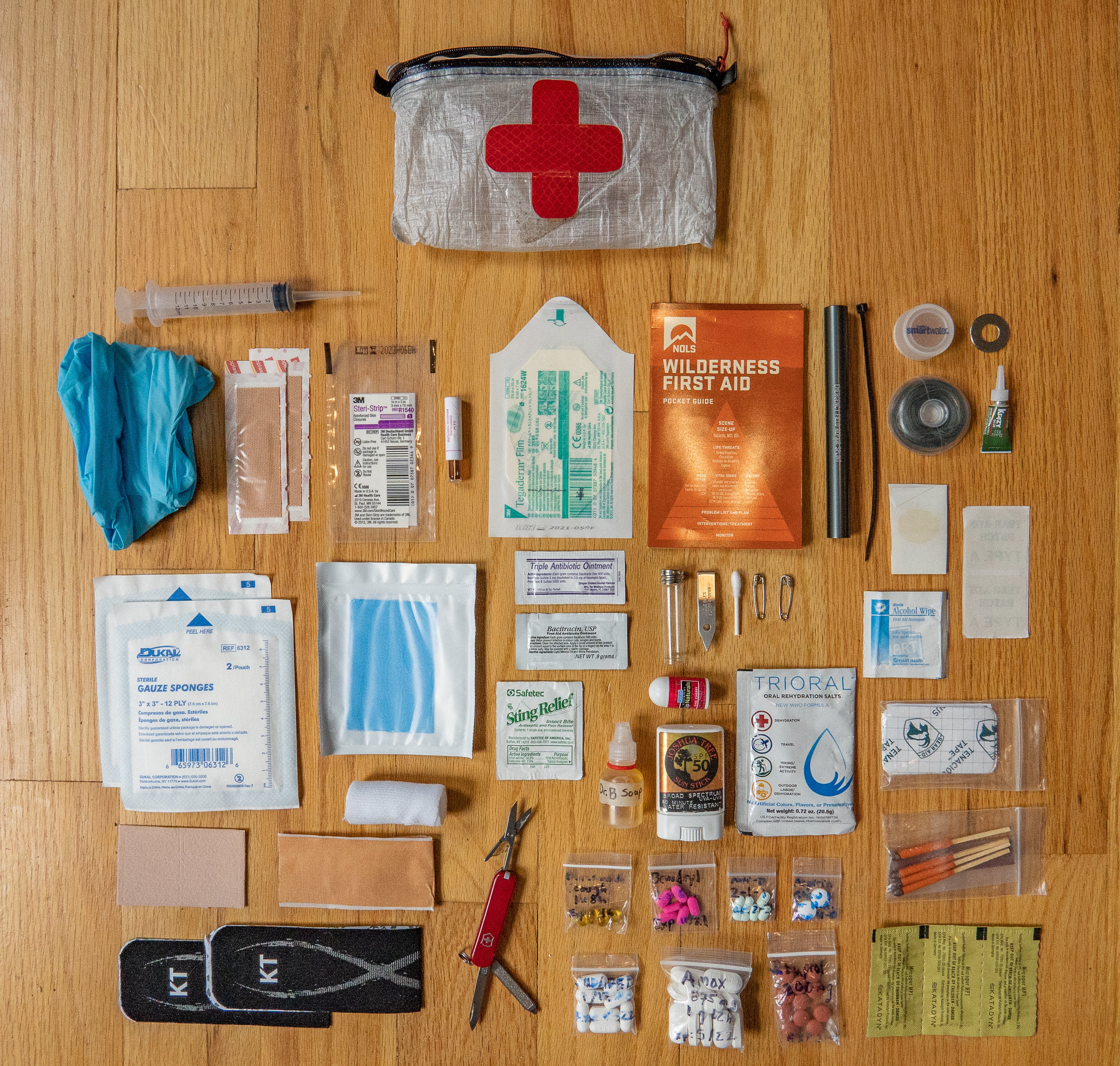
General
- Lite AF First Aid pouch – 7.5” x 4.25” (medium)
- NOLS Wilderness First Aid Pocket Guide
- Swiss Army Classic SD pocket knife (mainly for the scissors to cut medical supplies)
Wound management
- Pair of nitrile gloves
- 12 cc irrigation syringe
- Vial with tweezers (wound cleaning/splinters), ½ q-tip (wound cleaning) and 2 safety pins (repairs)
- Steri-strip 3” wound closure strips
- Tincture of benzoin (very sticky – for wound closure strips or blister management)
- 2 – 1” x 3” Elastoplast extra tough waterproof bandages – for small cuts, very adhesive
- 2 – 3” x 3” non-stick gauze pads
- 1 – 2” x 2.5 yard roll gauze
- 1 – 2” x 2” transparent semi-permeable dressing (Tegaderm film)
- 1 – Triple antibiotic ointment (to apply to bandage as a barrier)
- 1 – Bacitracin antibiotic ointment (for those allergic to Neomycin)
- 1 – Sting relief packet
Blister care
- 2 – 10” KT tape strips
- Leukotape strip
- 1 – 2″ x 3″ 2nd Skin burn dressing
- Pre-cut moleskin
Problem prevention
- Dr. Bronner’s soap in eye dropper bottle
- Joshua Tree SPF 50 sun stick
- Lip naturals SPF 15 mini lip balm
Fixing gear
- Emergency field repair splint (for broken tent pole)
- Zpacks sewing repair kit
- 0.5 oz Krazy glue
- Tenacious tape (to patch tent/clothes)
- Air mattress patch kit (includes alcohol wipes for first aid)
- Zip tie
Backup gear
These items don’t weigh much but they are backup for “high risk” situations:
- Spare bottle cap
- Spare washer (to open bear can)
- Waterproof matches + striker (backup if lighter is lost/empty)
- Water purification tablets (backup if water filter is lost/broken)
Drugs & fixing ailments
These are relatively standard in most First Aid Kits:
- Ibuprofen – fever/pain management
- Aspirin – chew for heart attack
- Diphenhydramine (Benadryl) – allergic reactions
- Loperamide (Imodium) – anti-diarrheal
For electrolyte replacement:
You should customize your kit with any medicines you may need (Epi-pen, for example). I am prone to sinus and upper respiratory infections, so I also carry:
- Amoxicillin – antibiotic to treat infection
- Pseudoephedrine (Sudafed) – relieve sinus pain/congestion
- Benzonatate – suppress coughing so your tentmates can sleep

